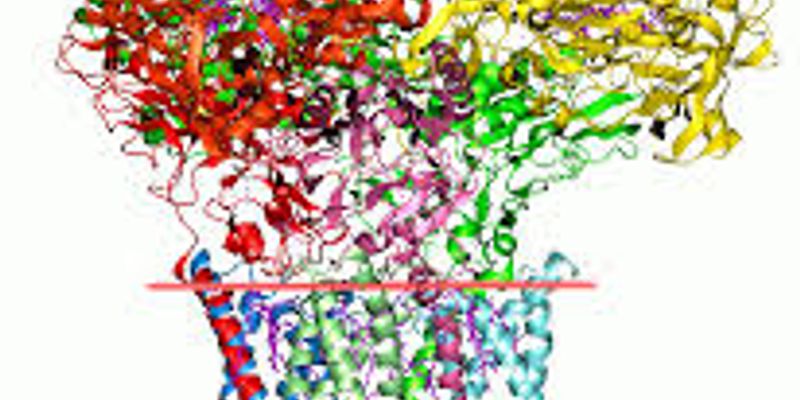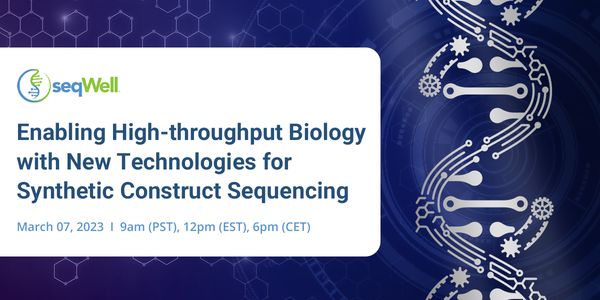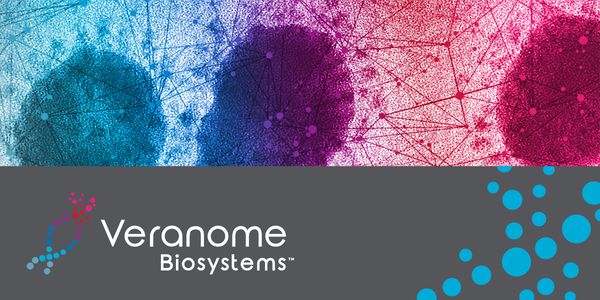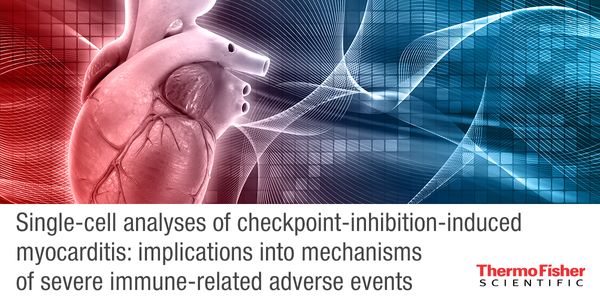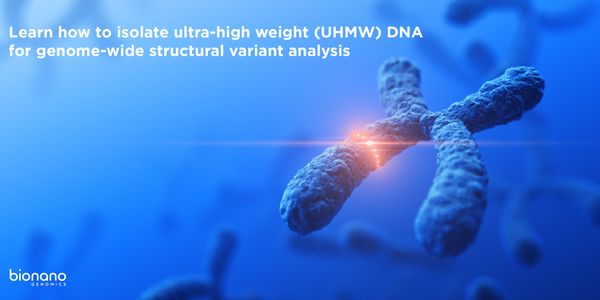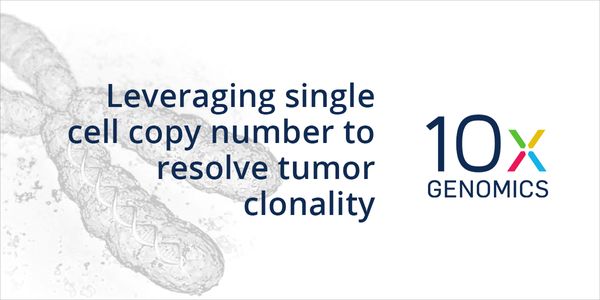Structural Bioinformatics
Structural Bioinformatics: is the branch of bioinformatics that is related to the analysis and prediction of the three-dimensional structure of biological macromolecules such as proteins, RNA, and DNA.
-
MAR 07, 2023 | 9:00 AMDate: March 07, 2023 Time: 9:00am (PST), 12:00pm (EST), 6:00pm (CET) The ability to synthesize and sequence vast numbers of DNA constructs is a cornerstone of modern high-throughput biologic...FEB 23, 2022 | 1:30 PMIntegrating external and internal ‘omics data is a key element of hypothesis generation, target identification, and biomarker prioritization when it comes to drug discovery. It is neve...Speaker: Joseph Pearson, PhDJUL 15, 2021 | 9:00 AMDate: July 15, 2021 Time: 9:00am (PDT), 12:00pm (EDT) The Pisces workflow robust, easy-to-use, end-to-end multi-omics solution for highly multiplexed targeted Spatial RNA analysis. VeranomeB...APR 22, 2021 | 6:00 AMAs NGS panels grow, test interpretation becomes more complex and time-consuming / With the explosion of NGS data, the need for consolidated databases with reliable and transparent curation a...Speaker: Dominic John , Simon Forbes, PhD , Shawn Bauer , Lisa Barrow-LaingFEB 24, 2021 | 10:00 AMDATE: February 24, 2021 TIME: 10am PST Automated lab instruments such as liquid handlers and cell sorters are increasingly common in all types of laboratories, driving fast results for labor...DEC 03, 2020 | 4:30 PMThis drug development program is designed to create a family of broad-spectrum, pan-coronaviral drugs that respectively inhibit multiple key enzymes required for viral replication. By target...SEP 09, 2020 | 9:00 AMEpidemics are occurring at an increasing pace and scale. Our laboratory group has developed platform technologies for discovery of broad and potent neutralizing antibodies for many emerging...SEP 09, 2020 | 12:00 AMHuman chromosome 19q13.4 contains genes encoding killer-cell immunoglobulin-like receptors (KIR). The region has certain properties such as single nucleotide variation, structural variation,...SEP 01, 2020 | 8:00 AMDATE: September 1, 2020 TIME: 8:00am PT, 11:00am ET Nearly half of all cancer patients are eligible to receive treatment with immune checkpoint inhibitors (ICI). Thus, preventing, identifyin...AUG 06, 2020 | 12:00 AMOver 100 distinct alkane monooxygenase (AlkB) enzymes containing a covalently bound, or fused, rubredoxin domain were identified and analyzed using bioinformatic techniques. One such protein...AUG 06, 2020 | 12:00 AMProtein structural disorder helps avoid misfolding and aggregation, but in impeding protein folding might also impede function. The balance between these two selective pressures on protein b...MAY 20, 2020 | 12:00 AMDesign and interpretation of genome sequencing assays and data in both clinical diagnostics and research labs is complicated by an inability to identify information from the medical literatu...Speaker: Mark Kiel, MD, PhDMAY 20, 2020 | 12:00 AMThe basic units of biological structure and function are cells, which exhibit wide variation in regard to both type and state. We assess such variation by simultaneously profiling the transc...Speaker: Anindita Basu, PhDMAY 20, 2020 | 12:00 AMAnalytical Method Validation work is based on a variety of guidelines and requirements hence being time-consuming and stressful. Reducing this work and improving efficiency while ensuring th...Speaker: Jürgen VoorgangMAY 20, 2020 | 12:00 AMTechniques to analyze and sort single cells based on secreted products have the potential to transform our understanding of cellular biology as well as accelerate the development of next gen...Speaker: Joseph de RutteMAY 20, 2020 | 12:00 AMThe digital lab is knocking at your door. In the age of digitalization and Industry 4.0, the laboratory is also on its way to the future. Lab 4.0 includes robotic systems, fully automated wo...Speaker: Guido von DahlenMAY 14, 2020 | 12:00 AMExperimental models that promise to replace animal tests that are currently required for drugs and chemicals are rapidly proliferating. This includes a number of novel solutions offered by b...APR 24, 2020 | 8:00 AMDATE: April 24, 2020 TIME: 8:00am PT, 11:00am ET, 5:00pm CET...APR 22, 2020 | 12:00 AMComplex genomes, including the human genome, contain ‘dark’ regions that standard short-read sequencing technologies do not adequately resolve—overlooking many variants tha...APR 02, 2020 | 8:00 AMDATE: April 2, 2020 TIME: 8:00am PT, 11:00am ET Cyclins A2 and E1 regulate the cell cycle by promoting S phase entry and progression. We recently identified a hepatocellular carcinoma (HCC)...NOV 12, 2019 | 10:00 AMDATE: November 12, 2019TIME: 10:00am PSTDirect measurement of copy number by droplet-based shallow sequencing of genomic DNA has the potential to provide new insights into tumor heterog...OCT 10, 2019 | 10:30 AMAccumulation of structural variations (SVs) across the genome is a known trigger factor for oncogenesis. Structural mutations have been clearly implicated in a number of cancers, most notably...Speaker: Sven Bocklandt, PhDSEP 12, 2019 | 1:30 PMScientific conferences are most beneficial to participants when they showcase significant new experimental developments, accurately summarize the current state of the field, and provide stron...SEP 12, 2019 | 9:00 AMPlants recruit soil microbes that provide nutrients, promote growth and protect against pathogens. However, the full potential of microbial communities for supporting plant health and agricul...
MAR 07, 2023 | 9:00 AM
Date: March 07, 2023 Time: 9:00am (PST), 12:00pm (EST), 6:00pm (CET) The ability to synthesize and sequence vast numbers of DNA constructs is a cornerstone of modern high-throughput biologic...
FEB 23, 2022 | 1:30 PM
Integrating external and internal ‘omics data is a key element of hypothesis generation, target identification, and biomarker prioritization when it comes to drug discovery. It is neve...
Speaker:
Joseph Pearson, PhD
JUL 15, 2021 | 9:00 AM
Date: July 15, 2021 Time: 9:00am (PDT), 12:00pm (EDT) The Pisces workflow robust, easy-to-use, end-to-end multi-omics solution for highly multiplexed targeted Spatial RNA analysis. VeranomeB...
APR 22, 2021 | 6:00 AM
As NGS panels grow, test interpretation becomes more complex and time-consuming / With the explosion of NGS data, the need for consolidated databases with reliable and transparent curation a...
Speaker:
Dominic John
, Simon Forbes, PhD
, Shawn Bauer
, Lisa Barrow-Laing
FEB 24, 2021 | 10:00 AM
DATE: February 24, 2021 TIME: 10am PST Automated lab instruments such as liquid handlers and cell sorters are increasingly common in all types of laboratories, driving fast results for labor...
DEC 03, 2020 | 4:30 PM
This drug development program is designed to create a family of broad-spectrum, pan-coronaviral drugs that respectively inhibit multiple key enzymes required for viral replication. By target...
SEP 09, 2020 | 9:00 AM
Epidemics are occurring at an increasing pace and scale. Our laboratory group has developed platform technologies for discovery of broad and potent neutralizing antibodies for many emerging...
SEP 09, 2020 | 12:00 AM
Human chromosome 19q13.4 contains genes encoding killer-cell immunoglobulin-like receptors (KIR). The region has certain properties such as single nucleotide variation, structural variation,...
SEP 01, 2020 | 8:00 AM
DATE: September 1, 2020 TIME: 8:00am PT, 11:00am ET Nearly half of all cancer patients are eligible to receive treatment with immune checkpoint inhibitors (ICI). Thus, preventing, identifyin...
AUG 06, 2020 | 12:00 AM
Over 100 distinct alkane monooxygenase (AlkB) enzymes containing a covalently bound, or fused, rubredoxin domain were identified and analyzed using bioinformatic techniques. One such protein...
AUG 06, 2020 | 12:00 AM
Protein structural disorder helps avoid misfolding and aggregation, but in impeding protein folding might also impede function. The balance between these two selective pressures on protein b...
MAY 20, 2020 | 12:00 AM
Design and interpretation of genome sequencing assays and data in both clinical diagnostics and research labs is complicated by an inability to identify information from the medical literatu...
Speaker:
Mark Kiel, MD, PhD
MAY 20, 2020 | 12:00 AM
The basic units of biological structure and function are cells, which exhibit wide variation in regard to both type and state. We assess such variation by simultaneously profiling the transc...
Speaker:
Anindita Basu, PhD
MAY 20, 2020 | 12:00 AM
Analytical Method Validation work is based on a variety of guidelines and requirements hence being time-consuming and stressful. Reducing this work and improving efficiency while ensuring th...
Speaker:
Jürgen Voorgang
MAY 20, 2020 | 12:00 AM
Techniques to analyze and sort single cells based on secreted products have the potential to transform our understanding of cellular biology as well as accelerate the development of next gen...
Speaker:
Joseph de Rutte
MAY 20, 2020 | 12:00 AM
The digital lab is knocking at your door. In the age of digitalization and Industry 4.0, the laboratory is also on its way to the future. Lab 4.0 includes robotic systems, fully automated wo...
Speaker:
Guido von Dahlen
MAY 14, 2020 | 12:00 AM
Experimental models that promise to replace animal tests that are currently required for drugs and chemicals are rapidly proliferating. This includes a number of novel solutions offered by b...
APR 24, 2020 | 8:00 AM
DATE: April 24, 2020 TIME: 8:00am PT, 11:00am ET, 5:00pm CET...
APR 22, 2020 | 12:00 AM
Complex genomes, including the human genome, contain ‘dark’ regions that standard short-read sequencing technologies do not adequately resolve—overlooking many variants tha...
APR 02, 2020 | 8:00 AM
DATE: April 2, 2020 TIME: 8:00am PT, 11:00am ET Cyclins A2 and E1 regulate the cell cycle by promoting S phase entry and progression. We recently identified a hepatocellular carcinoma (HCC)...
NOV 12, 2019 | 10:00 AM
DATE: November 12, 2019TIME: 10:00am PSTDirect measurement of copy number by droplet-based shallow sequencing of genomic DNA has the potential to provide new insights into tumor heterog...
OCT 10, 2019 | 10:30 AM
Accumulation of structural variations (SVs) across the genome is a known trigger factor for oncogenesis. Structural mutations have been clearly implicated in a number of cancers, most notably...
Speaker:
Sven Bocklandt, PhD
SEP 12, 2019 | 1:30 PM
Scientific conferences are most beneficial to participants when they showcase significant new experimental developments, accurately summarize the current state of the field, and provide stron...
SEP 12, 2019 | 9:00 AM
Plants recruit soil microbes that provide nutrients, promote growth and protect against pathogens. However, the full potential of microbial communities for supporting plant health and agricul...
